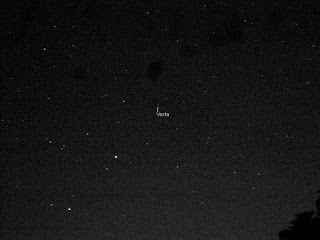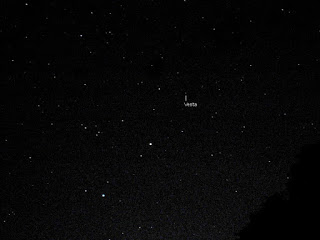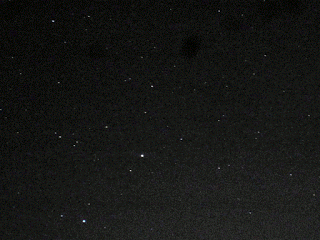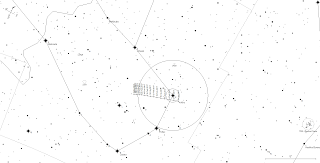

| Online: | |
| Visits: | |
| Stories: |

| Story Views | |
| Now: | |
| Last Hour: | |
| Last 24 Hours: | |
| Total: | |
Asteroid Vesta 25-29 January 2017
Tuesday, January 31, 2017 6:14
% of readers think this story is Fact. Add your two cents.
The asteroid Vesta is just below unaided eye visibility (magnitude 6.5) and moving through Gemini. It is easily visible in binoculars, although you might need to watch from night to night to see it move as there are several dim stars in the area. I had good conditions for several nights in a row (despite fearsome mosquitoes) and was able to see it drift towards kappa (ð) Geminorium. I made an animation (see below) from the images I captured.
Over the next few night it will be very close to kappa (ð) Geminorium, making Vesta very easy of find. Kappa (ð) Geminorium is the next brightest star in almost a line with Castor and Pollux, which makes it a easy telescopic signpost.
Source: http://astroblogger.blogspot.com/2017/01/asteroid-vesta-25-29-january-2017.html






